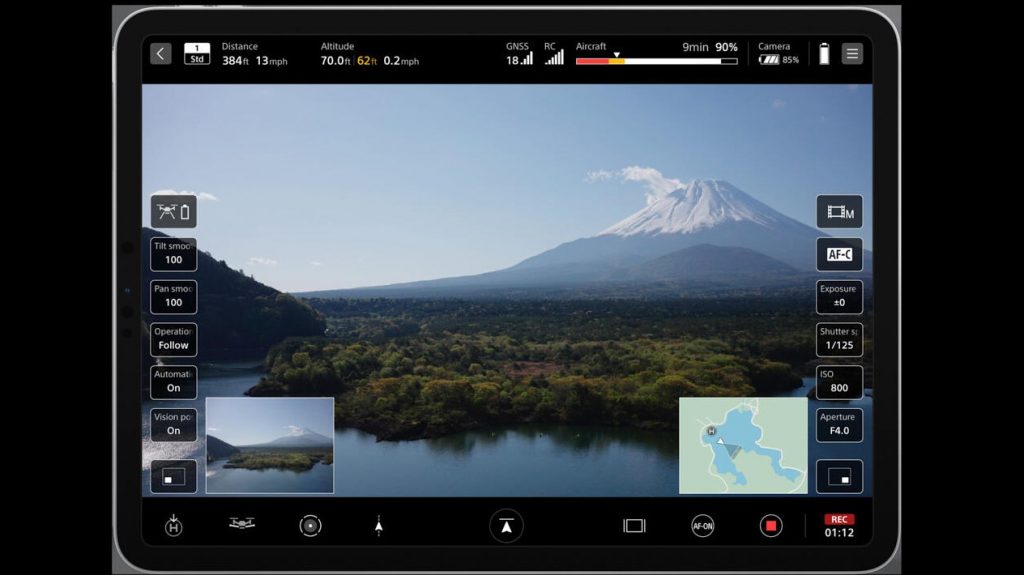After Months of Buzz Sony Officially Launches Its First Drone, the Airpeak S1
BY Zacc Dukowitz
17 June 2021After six months of waiting Sony has officially launched the Airpeak S1.
As you might remember, Sony first unveiled the Airpeak back in January at CES 2021.
But that announcement was more of a teaser than an official launch. All we knew back then was that the Airpeak would be a high-end drone for professional photography and videography.
Since then the company has released more teasers, sharing a video of the Airpeak sustaining winds of 64 feet/second and another video featuring beautiful footage shot on the remote island of Iriomote, located in Okinawa Prefecture in Japan (shown below).


Watch this video on YouTube
How Much Does the Airpeak S1 Cost?
The Airpeak S1 costs $9,000.
And that’s the price just for the drone, without a camera or gimbal.
The high price places it well outside the budget for most prosumers, making it clear that the S1 is meant for high-end cinematographers working on movie sets or other professional projects.
Although $9,000 is a lot for a drone, DJI charges $7,000 for its Matrice 600, which could also be used for high-end cinematography. (That price also doesn’t include a camera or gimbal.)


Image source: Sony
Everything We Know about Sony’s Airpeak S1
Here are the basic specs for the Airpeak S1:
- Speed. 55mph (90kph) without payload. (Sony hasn’t yet shared the drone’s speed when it’s carrying a camera.)
- Flight time. 12 minutes with a camera attached, 22 minutes with no payload.
- Wind resistance. Up to 44.7 mph, or 20m/s.
Sony’s new drone also comes with a lot of proprietary tech.
Instead of using components from other sources, like many drone manufacturers do, Sony decided to create several of its own parts for the Airpeak S1.
This approach indicates that Sony plans to be in the drone game for a while, since making your own parts can represent a pretty significant up-front investment.
Here’s everything that Sony makes in-house for the S1:
- Propellers. The Airpeak’s proprietary 17-inch propellers are made by Sony.
- Motor. The Airpeak’s proprietary brushless motor, equipped with ESC (Electric Speed Controller), is also made by Sony.
- Flight stability system. Sony made a Vision Sensing Processor for its drone that can process camera data at high speeds with low power consumption using proprietary algorithms, which estimate the drone’s spatial position in real time. This system can help the drone remain stable even in GNSS- or GPS-denied environments, such as indoors or in confined spaces, like under bridges.
- Obstacle detection and automatic braking. The drone comes with five image sensors for improved stability. It also has obstacle avoidance and automatic braking, which allows the drone to automatically slow or stop based on input from the sensors.
In addition to these components and systems, Sony created two new apps to support the Airpeak S1:
Airpeak Base—App for Automatic Flight Planning
Airpeak Base is a flight planning and drone ops management platform. Pilots can use it to manage flight logs and equipment, as well as creating flight plans.
The app also supports the creation of advanced flight plans, which can be used to fly the drone along a preset path as if it were “on rails installed in the air.”


Image source: Sony
Airpeak Flight—App for Mission Control
Although you can fly the Airpeak S1 using only the controller, Airpeak Flight makes things easier, allowing you to control the camera and gimbal in addition to the drone.
Airpeak Flight also comes with a dual operation mode, which allows one pilot to fly the drone while another operates the camera and gimbal at the same time.


Image source: Sony
Love Flexibility? The Airpeak S1 Supports Lots of Cameras and Lenses
The Airpeak S1 is capable of carrying several different types of cameras and lenses.
In fact, the most significant feature of the S1 may be that it’s “the world’s smallest drone capable of carrying Sony’s Alpha camera system”—a tagline Sony has been using throughout its promotional materials.
Airpeak will be designed to have a payload that can accommodate a variety of equipment. Customers will be able to select the lens that best suits their photography conditions and requirements.
Here are all the camera bodies you can use with the Airpeak S1:
- The Alpha 1—for shooting in 8K.
- The Alpha 7R series—for ultra-high definition.
- The Alpha 7S series and FX3—for high descriptive capability with suppressed noise.
- The Alpha 9 series—for images free from distortion.
As for lenses, the Airpeak will be compatible with a variety of types, including:
- G Master series products—including the FE14mm F1.8GM and FE24mm F1.4GM.
- The Sonnar T* FE35mm F2.8ZA—used frequently for surveying.
- The FE85mm F1.8—a telephoto lens used frequently for inspections.


Image source: Sony
Want to Collaborate with Sony?
Sony is looking for professional drone pilot content creators in the U.S. and Japan to collaborate on its Airpeak project.
Here is how Sony describes a professional collaborator:
Professional Collaborators: People and companies who currently use drones professionally to create content or provide additional services to customers.
Benefits of collaboration include:
Receive updates on events and other activities hosted by Sony.
Opportunities to collaborate with products under development.
Receive the latest information on our product development.
If you’re interested in collaborating with Sony, sign up here.


